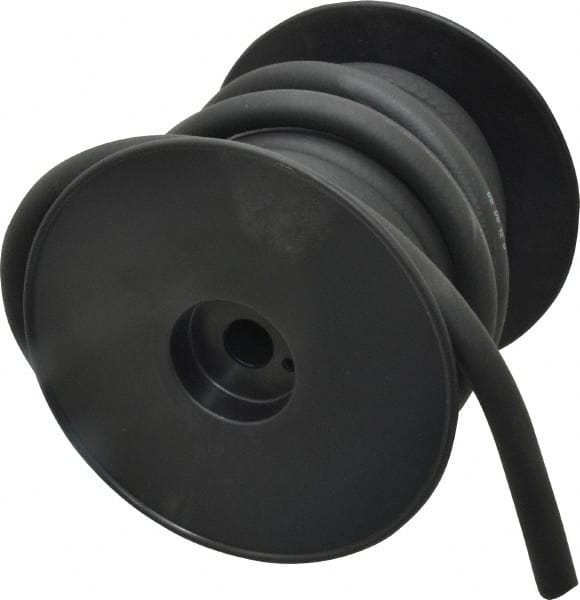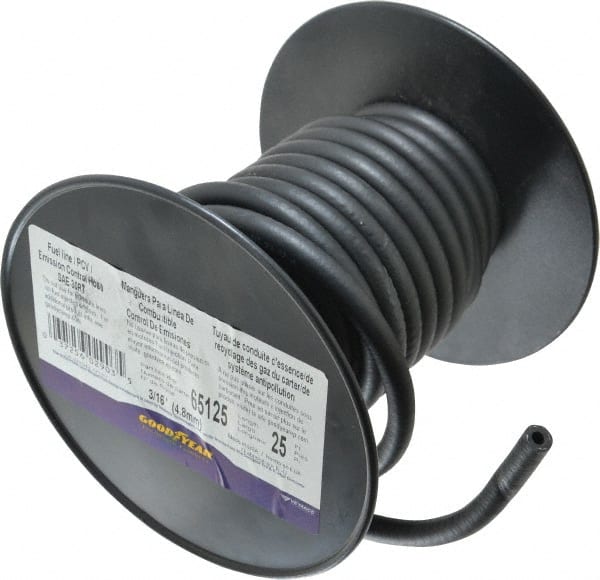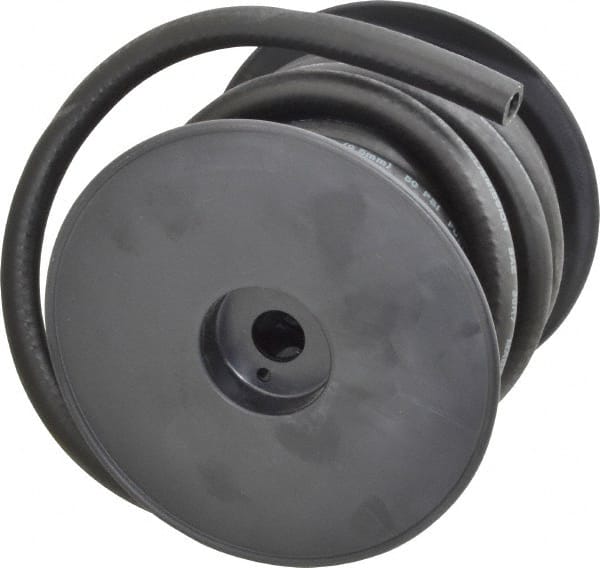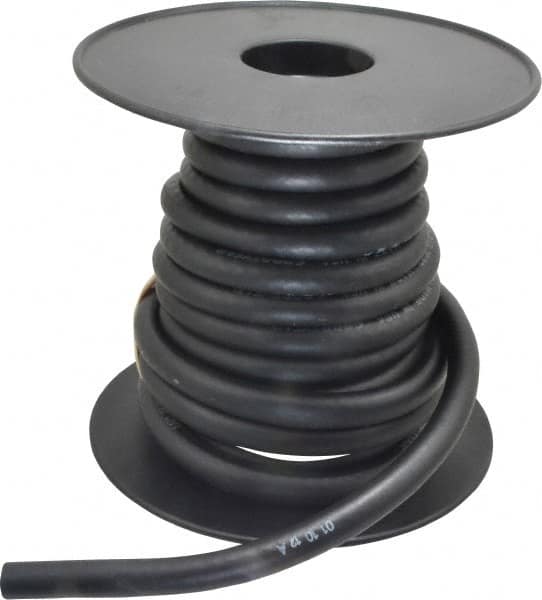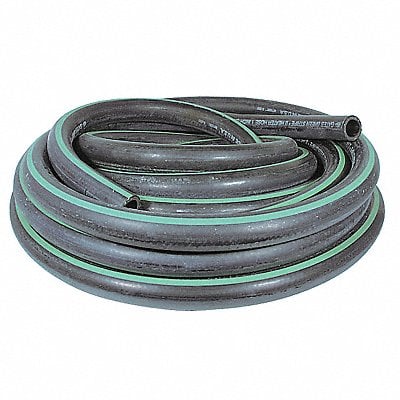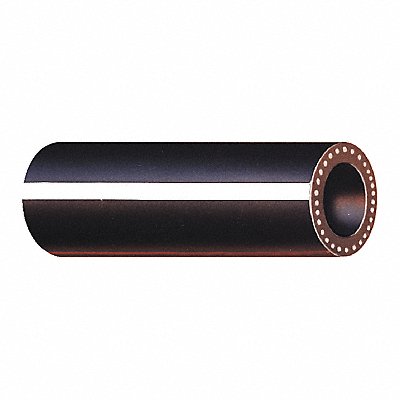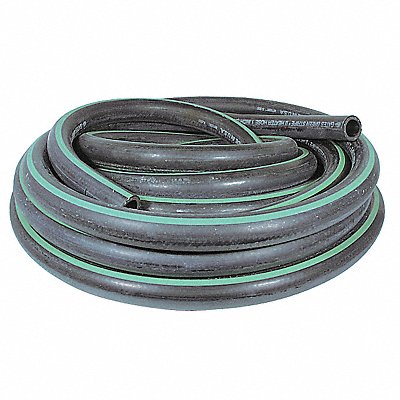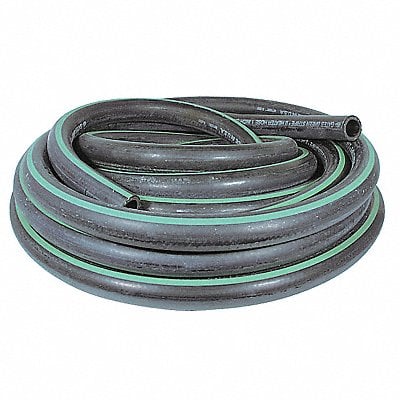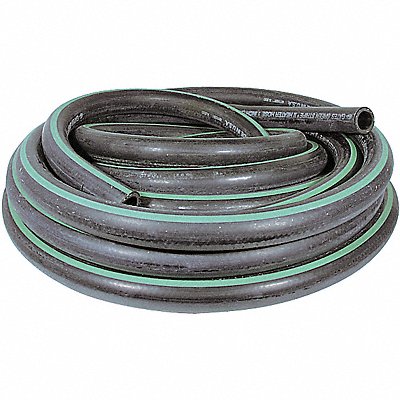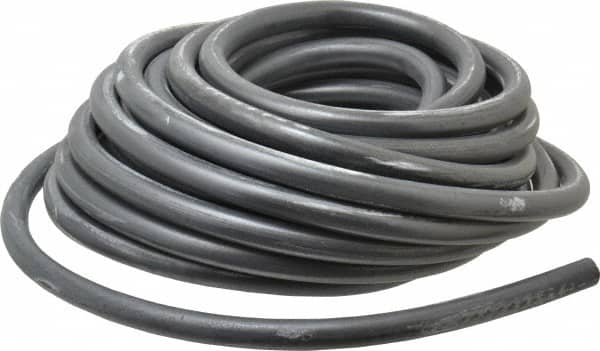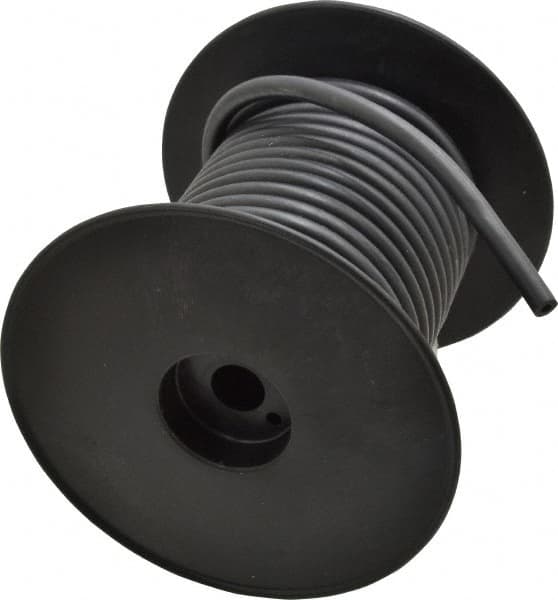Ultimate Guide to Automotive Hose & Tubing Products

Overview
Automotive Hose & Tubing products play a critical role in the functionality and safety of vehicles across various applications. From fuel delivery systems to exhaust management and signal transmission, these hoses are engineered to withstand high pressures, extreme temperatures, and chemical exposures. Understanding the specific types and their applications helps ensure optimal performance and reliability in automotive operations.
This comprehensive guide explores key categories such as Fuel Injection Hose, Heater Hose, and Windshield Washer Tubing, providing insights into their uses, benefits, and maintenance requirements. Whether you're a vehicle owner, mechanic, or fleet manager, choosing the right automotive hose ensures efficient operation and enhances vehicle longevity.
Table of Contents
- Fuel Injection Hose
- Fuel Line/Emission Control Hose
- Garage Exhaust Hose
- Heater Hose
- Power Brake Hose
- Radiator Hose
- Signal Call Bell Hose
- Windshield Washer Tubing
1. Fuel Injection Hose
The fuel injection hose is essential for delivering fuel under high pressure to the engine's fuel injectors, ensuring efficient combustion and engine performance.
Typical Applications: Used in automotive fuel systems, including cars, trucks, and motorcycles.
Top 5 Reasons to Use This Product:
-
- Ensures precise and reliable fuel delivery.
- Resistant to chemicals, abrasion, and high pressure.
- Durable construction for long-lasting performance.
- Easy installation and maintenance.
- Compatible with various fuel types, including ethanol blends.
Top 5 FAQs and Answers:
Here are the top 5 FAQs and their answers for fuel injection hoses:
-
What materials are used in fuel injection hoses?
- Answer: Fuel injection hoses are typically made from high-quality synthetic rubber or other durable materials like PTFE (Polytetrafluoroethylene) and reinforced with multiple layers of braided fibers or steel wire. These materials are chosen for their resistance to fuel, oil, heat, and pressure, ensuring the hose can withstand the harsh conditions of an engine environment.
-
How do I select the correct diameter for my vehicle?
- Answer: Selecting the correct diameter for a fuel injection hose is crucial for proper fuel flow and pressure maintenance. The hose diameter must match the original equipment specifications for your vehicle, which can be found in the vehicle's service manual. Using a hose with an incorrect diameter can lead to fuel delivery issues, leaks, or reduced engine performance.
-
Are these hoses compatible with diesel engines?
- Answer: Yes, fuel injection hoses are generally compatible with diesel engines, as they are designed to handle the higher pressures and different fuel characteristics associated with diesel. However, it is essential to ensure the hose material is specifically rated for diesel fuel to avoid degradation over time.
-
How often should fuel injection hoses be inspected/replaced?
- Answer: Fuel injection hoses should be inspected regularly, typically during routine vehicle maintenance, and replaced every 5-7 years or sooner if signs of wear or damage are present. Signs to look out for include cracks, bulges, leaks, or hardening of the hose material, which can compromise the hose's integrity and lead to fuel leaks.
-
Can fuel injection hoses withstand extreme temperatures?
- Answer: Yes, fuel injection hoses are designed to withstand extreme temperatures, both high and low. They are made from materials that can handle the heat generated by the engine and the cold conditions found in many climates. However, it's important to ensure that the hose you select is rated for the specific temperature range of your vehicle's operating environment.
Product Recommendations:
2. Fuel Line/Emission Control Hose
Fuel line/emission control hoses manage fuel and emissions within vehicles, ensuring compliance with environmental standards.
Typical Applications: Automotive fuel systems, emission control systems.
Top 5 Reasons to Use This Product:
-
- Ensures efficient fuel flow and emission control.
- Resistant to corrosion and environmental elements.
- Flexible for easy installation and routing.
- Enhances fuel efficiency and engine performance.
- Durable construction for longevity.
Top 5 FAQs and Answers:
Here are the top 10 FAQs and their answers for fuel line and emission control hoses:
-
What is the difference between fuel line and emission control hoses?
- Answer: Fuel line hoses are specifically designed to transport fuel from the fuel tank to the engine, while emission control hoses are used to carry vapors and gases produced by the engine to the emission control system, which prevents harmful pollutants from being released into the environment. Emission control hoses are typically more resistant to chemicals and heat due to their role in managing emissions.
-
Can these hoses be used with biofuels?
- Answer: Yes, many fuel line and emission control hoses are designed to be compatible with biofuels. However, it's important to verify the material compatibility with the specific biofuel type you're using, as some hoses may require materials that resist degradation from biofuel components like ethanol or biodiesel.
-
How do I check for leaks in fuel line hoses?
- Answer: To check for leaks in fuel line hoses, inspect the hose visually for cracks, abrasions, or signs of wear. You can also run the engine and look for any visible fuel drips or wet spots on the hose. Additionally, a fuel odor near the hose might indicate a leak. For a more thorough check, using a fuel pressure gauge can help identify pressure drops that could indicate a leak.
-
Are these hoses compatible with gasoline engines?
- Answer: Yes, both fuel line and emission control hoses are designed to be compatible with gasoline engines. They are typically made from materials that resist the corrosive effects of gasoline and the high temperatures encountered in engine environments. Always ensure the hoses meet the specifications required for your particular engine.
-
What are the installation tips for fuel line hoses?
- Answer: When installing fuel line hoses, ensure that they are routed away from hot engine parts to prevent heat damage. Use clamps or fittings designed specifically for fuel lines to secure the hoses properly, avoiding over-tightening to prevent damage. Make sure the hoses are cut to the correct length without sharp bends that could restrict fuel flow. Always check for leaks after installation by running the engine and inspecting the hose connections.
Product Recommendations:
3. Garage Exhaust Hose
Garage exhaust hoses are designed to safely expel exhaust fumes from vehicles within garage environments.
Typical Applications: Auto repair shops, service garages, vehicle inspection stations.
Top 5 Reasons to Use This Product:
-
- Captures and expels harmful exhaust gases.
- Heat-resistant materials for safety and durability.
- Flexible design for easy maneuverability.
- Prevents exposure to harmful emissions.
- Complies with safety and environmental regulations.
Top 5 FAQs and Answers:
Here are the top 10 FAQs and their answers for garage exhaust hoses:
-
How do garage exhaust hoses reduce environmental impact?
- Answer: Garage exhaust hoses reduce environmental impact by capturing and directing harmful exhaust fumes away from enclosed spaces, such as workshops and garages, where vehicles are serviced. By safely venting these fumes outside, they prevent the accumulation of toxic gases like carbon monoxide, which can harm both human health and the environment.
-
Are these hoses suitable for diesel vehicles?
- Answer: Yes, garage exhaust hoses are suitable for use with diesel vehicles. They are designed to handle the specific properties of diesel exhaust, which includes higher soot content and potentially higher temperatures compared to gasoline engines. It's important to select a hose that is rated for diesel exhaust to ensure durability and effectiveness.
-
What are the maintenance tips for garage exhaust hoses?
- Answer: Regular maintenance of garage exhaust hoses involves inspecting them for signs of wear, such as cracks, abrasions, or brittleness, especially near the hose ends and connections. Ensure the hose remains flexible and free from blockages. Clean the hose periodically to remove soot and other deposits, and replace it if any significant damage is found or if it becomes stiff and difficult to maneuver.
-
Can garage exhaust hoses handle high-temperature exhaust?
- Answer: Yes, most garage exhaust hoses are specifically designed to handle high-temperature exhaust gases. They are typically made from heat-resistant materials like neoprene or silicone, which can withstand the high temperatures generated by vehicle exhaust systems, especially during extended idling or high-load conditions.
-
Are these hoses resistant to chemicals and solvents?
- Answer: Yes, garage exhaust hoses are generally resistant to a range of chemicals and solvents that might be present in automotive environments. This includes resistance to oils, fuels, and cleaning agents that could otherwise degrade the hose material. However, it's important to verify the chemical resistance of the specific hose material you are using to ensure it matches your needs.
Product Recommendations:
4. Heater Hose
Heater hoses circulate coolant from the engine to the heater core, providing warmth inside the vehicle cabin.
Typical Applications: Automotive heating systems, HVAC systems.
Top 5 Reasons to Use This Product:
-
- Efficient coolant circulation for optimal heating.
- Resistant to coolant chemicals and high temperatures.
- Flexible and easy to install.
- Maintains cabin comfort in cold weather.
- Durable materials for long-term reliability.
Top 5 FAQs and Answers:
Product Recommendations:
5. Power Brake Hose
Power brake hoses deliver hydraulic brake fluid under pressure to ensure effective braking performance.
Typical Applications: Automotive braking systems, hydraulic systems.
Top 5 Reasons to Use This Product:
-
- Ensures responsive and reliable braking.
- High-pressure resistance for safety.
- Durable construction for longevity.
- Compatible with various brake fluids.
- Easy installation and maintenance.
Top 5 FAQs and Answers:
Product Recommendations:
6. Radiator Hose
Radiator hoses circulate coolant between the engine and radiator to maintain optimal engine temperature.
Typical Applications: Automotive cooling systems, radiator connections.
Top 5 Reasons to Use This Product:
-
- Efficient coolant flow for engine cooling.
- Heat-resistant materials for durability.
- Prevents overheating and engine damage.
- Flexible design for easy installation.
- Compatible with various vehicle makes and models.
Top 5 FAQs and Answers:
Product Recommendations:
7. Signal Call Bell Hose
Signal call bell hoses transmit signals for doorbells and alarms in automotive and industrial settings.
Typical Applications: Automotive service centers, industrial facilities.
Top 5 Reasons to Use This Product:
-
- Reliable signal transmission for safety and communication.
- Durable materials for long-term performance.
- Weather-resistant for outdoor use.
- Easy installation and setup.
- Compatible with various signal systems.
Top 5 FAQs and Answers:
Product Recommendations:
8. Windshield Washer Tubing
Windshield washer tubing delivers washer fluid to clean vehicle windshields effectively.
Typical Applications: Automotive windshield washer systems.
Top 5 Reasons to Use This Product:
-
- Ensures clear visibility for safe driving.
- Resistant to washer fluid chemicals.
- Flexible and easy to route.
- Prevents clogging and blockages.
- Durable construction for reliability.
Top 5 FAQs and Answers:
Here are the top 10 FAQs and their answers for windshield washer tubing:
-
How do windshield washer tubing systems work?
- Answer: Windshield washer tubing is part of the vehicle's windshield washer system, which delivers washer fluid from the reservoir to the spray nozzles on the windshield. When the washer button is activated, the pump sends fluid through the tubing, which then sprays the windshield to clean off dirt, grime, and debris, ensuring clear visibility for the driver.
-
Can these tubes be replaced without draining washer fluid?
- Answer: Yes, in many cases, windshield washer tubing can be replaced without draining the washer fluid reservoir. If the fluid level is low, you can simply disconnect the tubing at the appropriate points, replace it, and reconnect it without significant fluid loss. However, if the reservoir is full, some fluid might spill out during the replacement process, so it’s a good idea to have a container or cloth ready to catch any drips.
-
Are windshield washer tubes compatible with heated washer systems?
- Answer: Yes, many windshield washer tubes are designed to be compatible with heated washer systems. These systems help prevent the washer fluid from freezing in cold temperatures, ensuring effective cleaning even in winter. When replacing or installing tubing, make sure to choose tubing that is rated for use with heated systems to ensure durability and performance in all weather conditions.
-
What are signs of clogged windshield washer tubing?
- Answer: Signs of clogged windshield washer tubing include weak or uneven spray from the nozzles, no fluid coming out at all, or a sputtering spray pattern. You may also hear the pump working harder than usual. Clogs can be caused by debris, dirt, or congealed washer fluid, and they typically require cleaning or replacing the tubing to restore proper function.
-
How often should windshield washer tubing be inspected/replaced?
- Answer: Windshield washer tubing should be inspected at least once a year or whenever you notice a decrease in washer fluid performance. Look for signs of wear, such as cracks, brittleness, or clogs. While the tubing is generally durable, it may need to be replaced every 5-10 years depending on environmental exposure and use. Regular inspections help ensure that the system remains fully operational, providing clear visibility when needed.
Product Recommendations:
Final Thoughts
Selecting the right Automotive Hose & Tubing products is crucial for maintaining vehicle performance, safety, and compliance. Each category discussed—whether it's for fuel systems, exhaust management, or signal transmission—offers unique features tailored to specific automotive needs. By understanding the applications, benefits, and maintenance tips outlined in this guide, you can make informed decisions that improve vehicle reliability and longevity.
Investing in high-quality hoses not only enhances operational efficiency but also contributes to overall vehicle safety and environmental compliance. Whether you're replacing old hoses or upgrading to meet new regulatory standards, prioritizing durability, flexibility, and compatibility ensures reliable performance in diverse automotive environments.
Explore our recommended products in each category to find solutions that meet your specific automotive requirements. From enhancing fuel efficiency with Fuel Injection Hoses to ensuring clear visibility with Windshield Washer Tubing, these products are designed to deliver performance and reliability where it matters most—on the road.


